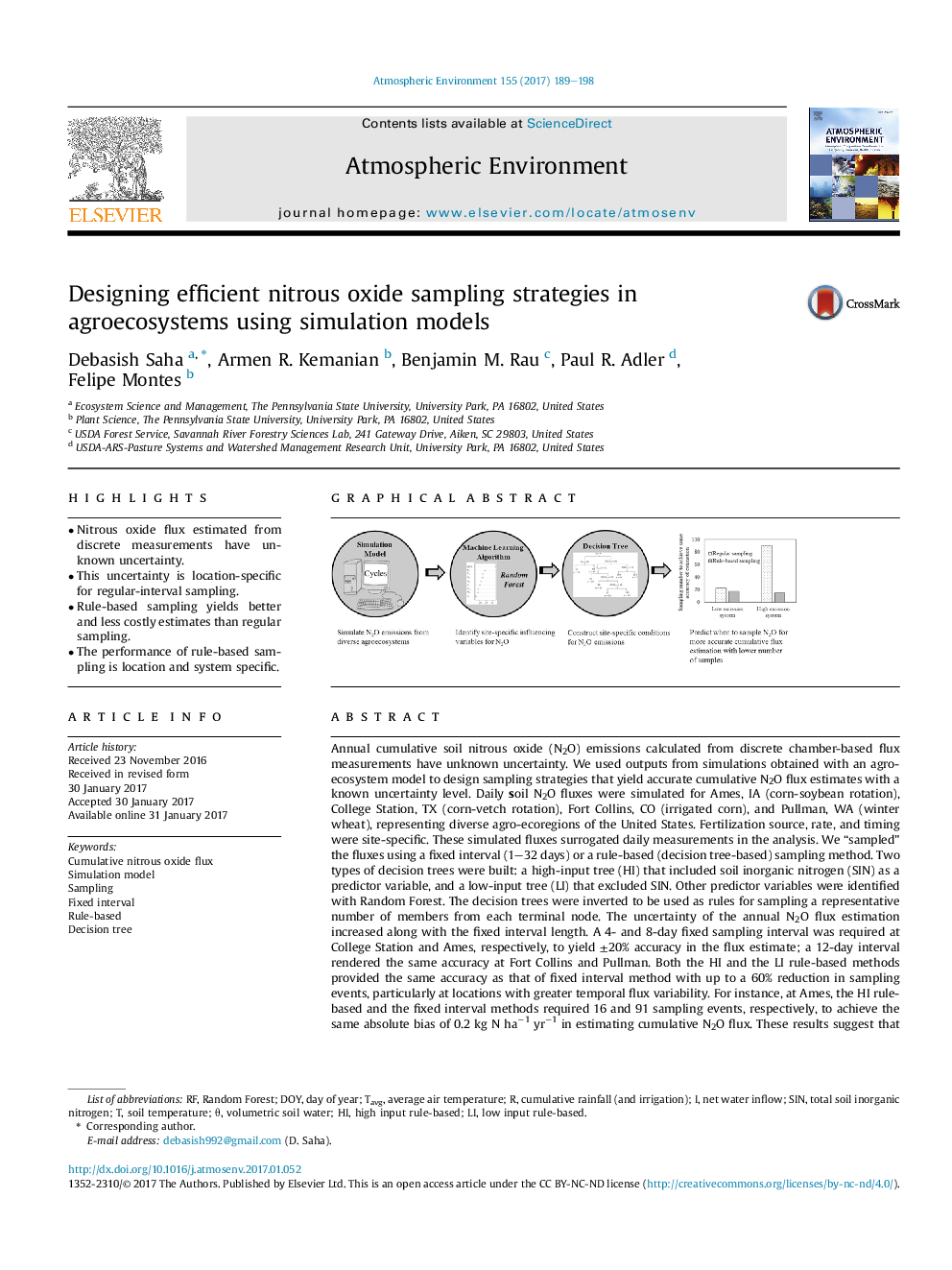| کد مقاله | کد نشریه | سال انتشار | مقاله انگلیسی | نسخه تمام متن |
|---|---|---|---|---|
| 5752974 | 1620319 | 2017 | 10 صفحه PDF | دانلود رایگان |
- Nitrous oxide flux estimated from discrete measurements have unknown uncertainty.
- This uncertainty is location-specific for regular-interval sampling.
- Rule-based sampling yields better and less costly estimates than regular sampling.
- The performance of rule-based sampling is location and system specific.
Annual cumulative soil nitrous oxide (N2O) emissions calculated from discrete chamber-based flux measurements have unknown uncertainty. We used outputs from simulations obtained with an agroecosystem model to design sampling strategies that yield accurate cumulative N2O flux estimates with a known uncertainty level. Daily soil N2O fluxes were simulated for Ames, IA (corn-soybean rotation), College Station, TX (corn-vetch rotation), Fort Collins, CO (irrigated corn), and Pullman, WA (winter wheat), representing diverse agro-ecoregions of the United States. Fertilization source, rate, and timing were site-specific. These simulated fluxes surrogated daily measurements in the analysis. We “sampled” the fluxes using a fixed interval (1-32 days) or a rule-based (decision tree-based) sampling method. Two types of decision trees were built: a high-input tree (HI) that included soil inorganic nitrogen (SIN) as a predictor variable, and a low-input tree (LI) that excluded SIN. Other predictor variables were identified with Random Forest. The decision trees were inverted to be used as rules for sampling a representative number of members from each terminal node. The uncertainty of the annual N2O flux estimation increased along with the fixed interval length. A 4- and 8-day fixed sampling interval was required at College Station and Ames, respectively, to yield ±20% accuracy in the flux estimate; a 12-day interval rendered the same accuracy at Fort Collins and Pullman. Both the HI and the LI rule-based methods provided the same accuracy as that of fixed interval method with up to a 60% reduction in sampling events, particularly at locations with greater temporal flux variability. For instance, at Ames, the HI rule-based and the fixed interval methods required 16 and 91 sampling events, respectively, to achieve the same absolute bias of 0.2 kg N haâ1 yrâ1 in estimating cumulative N2O flux. These results suggest that using simulation models along with decision trees can reduce the cost and improve the accuracy of the estimations of cumulative N2O fluxes using the discrete chamber-based method.
169
Journal: Atmospheric Environment - Volume 155, April 2017, Pages 189-198
